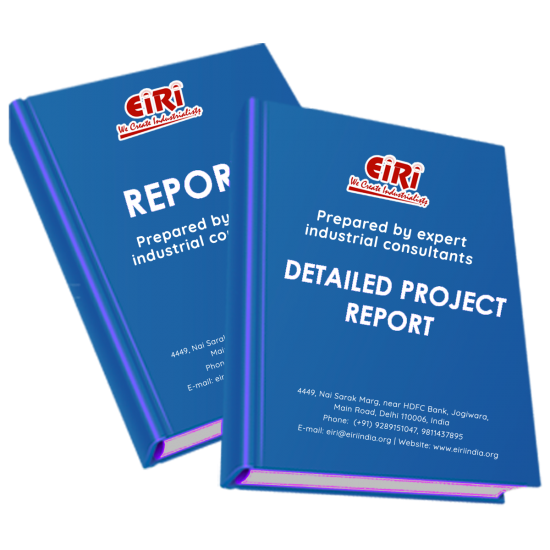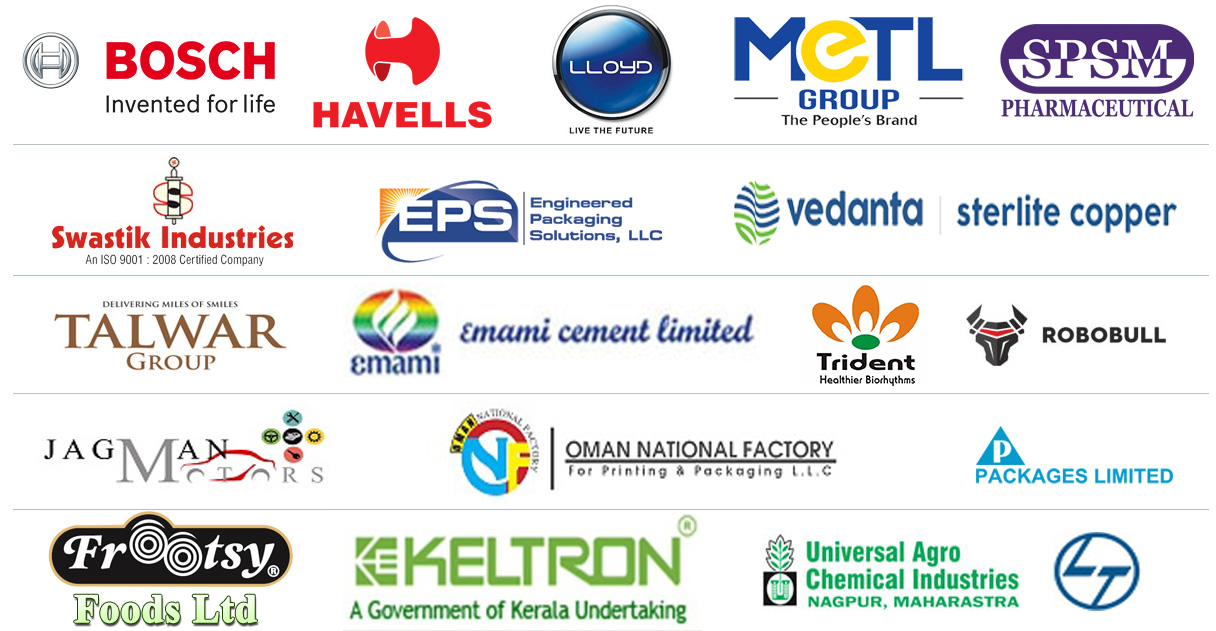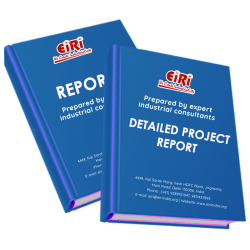Detailed Project Report on cement grinding unit

- More than 45 years of experience
- Managed by expert industrial consultants
- ISO 9001-2015 Certified
- Registered under MSME, UAM No: DL01E0012000
- 24/5 Research Support
Get your quesries resolved from an industry expert. Ask your queries before report or book purchase. - Custom Research Service
Speak to the our consultant to design an exclusive study to serve your research needs. - Quality Assurance
All reports are prepared by highly qualified consultants & verified by a panel of experts. - Information Security
Your personal & confidential information is safe & secure.
CEMENT GRINDING UNIT
[CODE NO.4099]
Cement is a material with adhesive and cohesive properties which make it capable of bonding minerals fragments into a compact whole. For constructional purposes, the meaning of the term "cement" is restricted to the bonding materials used with stones, sand, bricks, building stones, etc.
TYPES OF CEMENTS:
Cement may be hydraulic or non-hydraulic:
1) Non-hydraulic cements (e.g. gypsum plaster) must be kept dry in order to retain their strength.
2) Hydraulic cements harden because of hydration, chemical reactions that occur independently of the mixture's water content; they can harden even underwater or when constantly exposed to wet weather. The chemical reaction that results when the anhydrous cement powder is mixed with water produces hydrates that are not water-soluble.
Hydraulic cement may be:
i) Portland cements
ii) Natural cements
iii) Expansive cements
iv) High-alumina cements
PORTLAND CEMENT. It is hydraulic cement that hardens in water to form a water-resistant compound. Made by finely clinker
The cements of interest in the making of concrete have the property of setting and hardening under water by virtue of a chemical reaction with it and are, therefore, called hydraulic cement. The name "Portland cement" given originally due to the resemblance of the color and quality of the hardened cement to Portland stone – Portland Island in England.
Portland cement is the most common type of cement in general usage in many parts of the world, as it is a basic ingredient of concrete, mortar, stucco and most non-specialty grout. It is a fine powder produced by grinding Portland cement clinker (the solid material produced by the cement kiln stage that has sintered into lumps or nodules, typically of diameter 1-25 mm) (more than 90%), a maximum of about 5% gypsum which controls the set time, and up to 5% minor constituents (as allowed by various standards). As defined by the European Standard EN197.1, "Portland cement clinker is a hydraulic material which shall consist of at least two-thirds by mass of calcium silicates (3CaO.SiO2 and 2CaO.SiO2), the remainder consisting of aluminium- and iron-containing clinker phases and other compounds. The ratio of CaO to SiO2 shall not be less than 2.0. The magnesium content (MgO) shall not exceed 5.0% by mass."
Portland cement clinker is made by heating, in a kiln, a homogeneous mixture of raw materials to a sintering temperature, which is about 1450 °C for modern cements. The aluminium oxide and iron oxide are present as a flux and contribute little to the strength.
COST ESTIMATION
Plant Capacity 250 Ton/Day
Land & Building (8000 sq.mt.) Rs. 4.92 Cr
Plant & Machinery Rs. 4.17 Cr
Working Capital for 1 Month Rs. 2.76 Cr
Total Capital Investment Rs. 12.23 Cr
Rate of Return 28%
Break Even Point 59%
- INTRODUCTION
- TYPES OF CEMENTS:
- HYDRAULIC CEMENT MAY BE:
- TYPES OF PORTLAND CEMENT
- 1. WHITE CEMENT
- 2. MODIFIED PORTLAND CEMENT
- 3. RAPID HARDENING OR HIGH EARLY STRENGTH CEMENT (TYPE III)
- 4. QUICK SETTING CEMENT
- 5. LOW HEAT CEMENT
- 6. SULPHATE RESISTANT PORTLAND CEMENT
- 7. WATER REPELLENT PORTLAND CEMENT
- 8. WATER PROOF PORTLAND CEMENT
- 9. HIGH ALUMINA CEMENT
- 10. PORTLAND SLAG CEMENT
- 11. AIR ENTRAINING CEMENT
- 12. PORTLAND POZZOLANA CEMENT
- 13. SUPERSULPHATED CEMENT
- 14. MASONRY CEMENT
- 15. EXPANSIVE OR EXPANDING CEMENT
- BASICS OF CEMENT INDUSTRY
- PROPERTIES
- PHYSICAL PROPERTIES
- THE PHYSICAL PROPERTIES OF CEMENT
- SETTING TIME
- TESTS:
- CONSISTENCY
- THE DEPTH DEPENDING ON THE CONSISTENCY
- SOUNDNESS
- TEST FOR SOUNDNESS
- FINENESS
- TEST FOR FINENESS
- STRENGTH
- DURATION OF TESTING
- TYPICALLY, DURATIONS OF TESTING ARE:
- COMPRESSIVE STRENGTH
- RAW MATERIALS AND CEMENT
- USES AND APPLICATIONS
- B.I.S SPECIFICATION
- MARKET OVERVIEW OF CEMENT IN INDIA
- MARKET OVERVIEW
- EXPORT AND IMPORT OF CEMENT
- INSTALLED CAPACITY & KEY MARKETS IN EACH OF THE GEOGRAPHIC REGIONS
- RECENT STRATEGIES
- SUCCESSFUL USE OF ALTERNATE FUELS IN CEMENT PRODUCTION
- GROWTH DRIVERS AND OPPORTUNITIES
- GOVERNMENT BUDGET ALLOCATION AND SCHEMES
- INVESTMENT SCENARIO
- SEQUENCES IN CEMENT GRINDING
- MANUFACTURING PROCESS
- STEPS
- TRANSFER OF CEMENT TO SILO:
- PROCESS OF PACKING AND LOADING PLANT:
- 1. TRANSFER OF CEMENT FROM SILO TO PACKERS:
- 2. PACKING OF CEMENT BAGS:
- 3. LOADING OF CEMENT BAGS AND BULK LOADING:
- PROCESS FLOW CHART
- PROCESSING DETAILS IN CEMENT GRINDING
- COMPOSITION OF CEMENT GRINDING UNIT
- QUALITY CONTROL
- BALL MILL
- PACKAGING & SHIPPING
- QUALITY ASSURANCE
- FAQ ABOUT CEMENT CLINKER GRINDING PLANT
- CEMENT GRINDING UNIT
- SUPPLIERS OF RAW MATERIAL
- SUPPLIERS OF CLINKER
- SUPPLIERS OF GYPSUM
- COMPLETE PLANT AND MACHINERY SUPPLIERS
- SUPPLIERS OF RAW MATERIALS
- SUPPLIERS OF CLINKER
- SUPPLIERS OF GYPSUM
- COMPLETE PLANT SUPPLIERS
- SUPPLIERS OF PLANT AND MACHINERIES
- SUPPLIERS OF AUTOMATIC GRINDING MACHINE
- SUPPLIERS OF JAW CRUSHER
- SUPPLIERS OF BUCKET ELEVATOR
- SUPPLIERS OF BELT CONVEYOR
- SUPPLIERS OF BALL MILL
- SUPPLIERS OF BAG PACKAGING MACHINES
- SUPPLIERS OF DG SETS
- SUPPLIERS OF LABORATORY EQUIPMENT
APPENDIX – A:
01. PLANT ECONOMICS
02. LAND & BUILDING
03. PLANT AND MACHINERY
04. OTHER FIXED ASSESTS
05. FIXED CAPITAL
06. RAW MATERIAL
07. SALARY AND WAGES
08. UTILITIES AND OVERHEADS
09. TOTAL WORKING CAPITAL
10. TOTAL CAPITAL INVESTMENT
11. COST OF PRODUCTION
12. TURN OVER/ANNUM
13. BREAK EVEN POINT
14. RESOURCES FOR FINANCE
15. INSTALMENT PAYABLE IN 5 YEARS
16. DEPRECIATION CHART FOR 5 YEARS
17. PROFIT ANALYSIS FOR 5 YEARS
18. PROJECTED BALANCE SHEET FOR (5 YEARS)
How to Make Project Report?
Detailed Project Report (DPR) includes Present Market Position and Expected Future Demand, Technology, Manufacturing Process, Investment Opportunity, Plant Economics and Project Financials. comprehensive analysis from industry covering detailed reporting and evaluates the position of the industry by providing insights to the SWOT analysis of the industry.
Each report include Plant Capacity, requirement of Land & Building, Plant & Machinery, Flow Sheet Diagram, Raw Materials detail with suppliers list, Total Capital Investment along with detailed calculation on Rate of Return, Break-Even Analysis and Profitability Analysis. The report also provides a birds eye view of the global industry with details on projected market size and then progresses to evaluate the industry in detail.
We can prepare detailed project report on any industry as per your requirement.
We can also modify the project capacity and project cost as per your requirement. If you are planning to start a business, contact us today.
Detailed Project Report (DPR) gives you access to decisive data such as:
- Market growth drivers
- Factors limiting market growth
- Current market trends
- Market structure
- Key highlights
Overview of key market forces propelling and restraining market growth:
- Up-to-date analyses of market trends and technological improvements
- Pin-point analyses of market competition dynamics to offer you a competitive edge major competitors
- An array of graphics, BEP analysis of major industry segments
- Detailed analyses of industry trends
- A well-defined technological growth with an impact-analysis
- A clear understanding of the competitive landscape and key product segments
Need Customized Project Report?
- Ask for FREE project related details with our consultant/industry expert.
- Share your specific research requirements for customized project report.
- Request for due diligence and consumer centric studies.
- Still haven't found what you're looking for? Speak to our Custom Research Team
About Engineers India Research Institute:
Note: We can also prepare project report on any subject based on your requirement and country. If you need, we can modify the project capacity and project cost based on your requirement.
Our Clients

Our Approach
- Our research reports comprehensively cover Indian markets (can be modified as per your country), present investigation, standpoint and gauge for a time of five years*.
- The market conjectures are produced on the premise of optional research and are cross-accepted through associations with the business players
- We use dependable wellsprings of data and databases. What's more, data from such sources is handled by us and incorporated into the report
Why buy EIRI reports?
- Our project reports include detailed analysis that help to get industry Present Market Position and Expected Future Demand.
- Offer real analysis driving variables for the business and most recent business sector patterns in the business
- This report comprehends the present status of the business by clarifying a complete SWOT examination and investigation of the interest supply circumstance
- Report gives investigation and top to bottom money related correlation of real players/competitors
- The report gives gauges of key parameters which foresees the business execution























